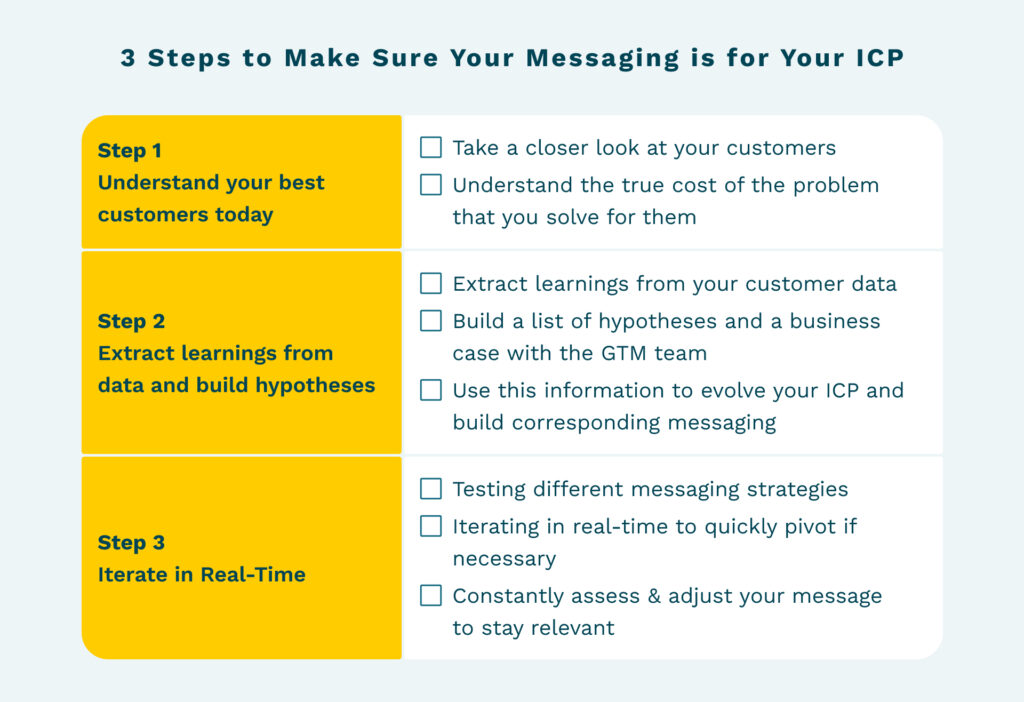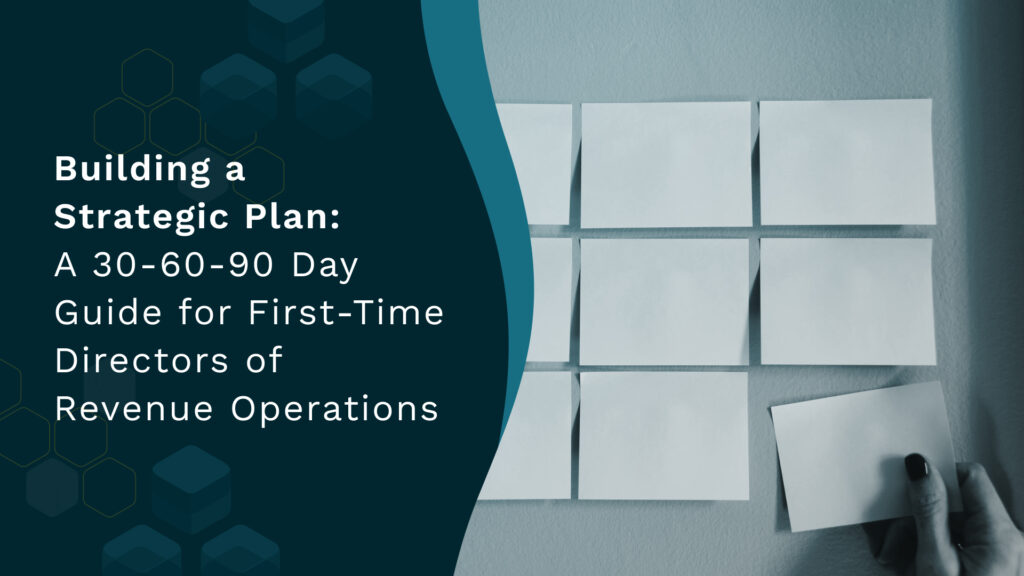As a RevOps leader, you know how critical it is to have a clear message that resonates with your ideal customer profile (ICP). It’s a message that you’ve likely spent countless hours refining, testing, and perfecting over the last few years.
But what if I told you that the message you thought was working may not be top of mind anymore? And your ICP may be shifting in real-time?
It’s a challenging reality. But it’s one that we must face as we navigate the current market landscape.
From where we sit, many teams are still bringing the same messages to market, and they aren’t shifting boldly enough to meet the changing needs of their customers. Asking basic questions like “Do you have this challenge?” or “What is the challenge? ” is elementary. And it isn’t enough anymore.
Instead, we need to quantify the cost of the challenge or size of the lost opportunity with the buyer.
The good news is that there is a quick way to pivot and 3X your pipeline.
Here are three steps to help you make sure your message is resonating with your core audience:

Step 1: Understand Your Best Customers Today
According to a recent study by McKinsey, over 80% of B2B buyers believe that their suppliers aren’t meeting their expectations. This highlights the need for companies to understand their customers better and provide them with solutions that meet their needs. By understanding your best customers, you can build a picture of what your ICP looks like, and what their pain points are.
Take a closer look at your best customers today.
- Who are they?
- What problems are you solving for them?
You need to understand from them what’s the true cost of the problem that YOU solve for them.
This is critical for ICP enablement as more often than not, buyers rarely understand the true cost of the problem.
Step 2: Extract Learnings from Data and Build Hypotheses
One of the key challenges that RevOps leaders heard from GTM Teams is that their message does not resonate with the core audience. According to Forrester, only 28% of B2B marketers believe that their messages are relevant to their customers. This highlights the need for companies to develop messaging that connects with their ICP.
Extract learnings from this data and build a list of hypotheses and business case with your team. Use this information to evolve your ICP and build corresponding messaging. Think outside the box and be willing to take risks.
Once you understand your best customers’ problems and the true cost of those problems, RevOps can help extract learnings from this data and build a list of hypotheses and a business case with your GTM team. Use this information to evolve your ICP and build corresponding messaging.
It’s important to approach this step with an open mind and think outside the box. Don’t be afraid to take risks and try something new. By analyzing the data and building hypotheses, you can make informed decisions and take bold steps to pivot your messaging.
Step 3: Iterate in Real-Time
According to HubSpot, companies that test more than 3 different value propositions increase their conversion rates by 70%. This highlights the importance of testing different messaging strategies to ensure that your message resonates with your core audience. By iterating in real-time, you can quickly pivot and ensure that your message is resonating with your customers.
Make a bold call and run with it based on what you know about your customers. You don’t have time to run long experiments and brand assessments for the next 6 months. Instead, you need to start learning and iterating in real-time. A helpful way to do this is by holding daily film reviews with cross-functional teams to see how the message is resonating.
Conclusion
As a RevOps leader, you need to be constantly assessing and adjusting your message to stay relevant in an ever-changing market. By taking a more data-driven approach, building hypotheses, and iterating in real-time, you can quickly pivot and ensure that your message is resonating with your core audience.
So, take a bold step and evolve your messaging today to meet the changing needs of your customers.

PUBLISHED BY







